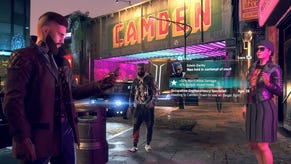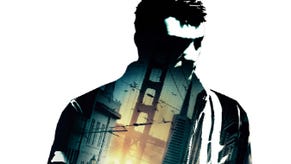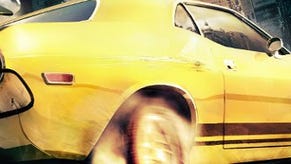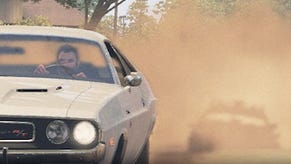Reflections readies return of "iconic" Driver
Driver: San Francisco is the return of a franchise that, Reflections assures us, rubs shoulders with the likes of PlayStation legends Tomb Raider and Resident Evil. Impressions, new video, images.
It’s been five years since the last home console instalment in the Driver franchise. Even so, Driver: San Francisco picks up the narrative from the older – and awkwardly titled - third instalment, Driv3r, which was released in 2004 to critical reception that ranged from lukewarm to stone cold. But in this age of the BAFTA award winning Need for Speed: Hot Pursuit and with several entries in the MotorStorm series in the intervening years, is the Driver brand still relevant?
“Absolutely,” insists Jean-Sebastien Decant, senior designer on Driver: San Francisco. “Look at iconic brands from PlayStation history: Resident Evil, Tomb Raider and Driver, plus maybe one or two others. It’s a brand that really captured the hearts and minds of players. We think this attachment that people have to the brand is still there, just waiting for Driver to be brought back in spectacular fashion.”
Ubisoft Reflections’ attempt to push the franchise back to the forefront of the gamer consciousness sees the return of popular protagonist Tanner and his nemesis Jericho. The narrative picks up around six months after the end of Driv3r, where it’s revealed that both men survived the shootout that provided the game's climax.
Police convoy
The action picks up with Jericho being transported in a police convoy from which he escapes with the help of a mystery woman, who fires a shoulder-mounted RPG from a hijacked news helicopter. Taking control of his armoured transport, Jericho is pursued by Tanner in his iconic Dodge Challenger and the intro ends with Tanner being ploughed into and knocked unconscious. Having received life-threatening injuries, Tanner sinks into a coma-dream - of which he is unaware, believing instead that he has regained consciousness moments after the accident - and it’s this that paves the way for the headline feature of Driver: San Francisco: ‘shift’.
“Shift is a way of staying in the action by instantly taking control of any vehicle that you can see, without ever having to get out of the car,” explains Marie-Jo Leroux, the game’s producer.
“The story is built around the shift mechanic,” adds Decant. “However, we’ve worked to provide a proper, fleshed-out cop-story, one that’s grounded in reality but has some fantasy elements. References for this game include [UK TV show] Life on Mars, but also movies like Inception. We’re now seeing a lot of movies introducing this reality-fantasy concept, such as Source Code, Adjustment Bureau and Sucker Punch.”
The result, based on the initial hands-on time with the single-player game, is a title with zeitgeist. In Tanner’s coma, a free-moving target reticule can be enabled that, at the first level of the upgradeable shift ability, elevates the camera just above the vehicle you’re controlling. This puts your vehicle in to auto-pilot and leaves you free to scroll the cursor to highlight any other vehicle, near or far, with a further button press putting you in control of the selected mode of transport. You take control of the body of the driver meaning any passengers in the car will carry on yammering away as though nothing is amiss, reacting only when you start throwing the car into power slides, weaving in-between oncoming traffic or jumping San Francisco’s iconic steep roads.
Shift also gives the developer free rein to include a number of varied mission types. Some of these are pivotal to the plot: one of the first examples of Shift sees you take control of the ambulance driver who is transporting Tanner’s prone body to hospital. Others are more frivolous thrill-seeking ‘City Missions’ and ‘Dares,' such as shifting to a high-powered performance car that’s being taken for a test-drive and performing stunts. Both examples earn you the game’s currency that can be spent on upgrades to the shift ability and new car types, as well as recharging the shift meter, which decreases with each use.
The numbers game
When fully upgraded, shift can be seamlessly zoomed out to three levels, giving a Google Earth-type view of the whole city. The city provides over 200 miles of road around which over 120 licensed cars can be driven whilst listening to 60 different licensed music tracks.
This licensing is a first for the Driver franchise, but does not limit the damage modelling from previous games, and so hub caps fly, windows shatter and body work gets bent out of shape, especially if you’re able to end the pursuit of a DeLorean or Alfa Romeo by shifting to an oncoming articulated lorry and meeting your quarry head-on. Underpinning the high-speed chases and traffic carnage is a propriety engine that has been built from the ground up, to help the team reach its goal of a solid 60 frames-per-second.
Our hands-on time with the PS3 build is purely focused on the single-player experience, but Leroux assures me that the multiplayer options are extensive.
"It’s a brand that really captured the hearts and minds of players. We think people are just waiting for Driver to be brought back in spectacular fashion.”
“Firstly, we have the film director mode that allows you to record, edit and upload videos, plus we have 19 multiplayer modes,” the producer says. “Three are split-screen co-op, 11 are online competitive and the rest are split screen competitive. It’s very fast-paced, and shift enables micro-strategies that can be adjusted on the fly.”
“Shift enables you to come at multiplayer in a different manner,” elaborates Decant. “Some of the modes here are closer to an online FPS than a traditional driving game, such as Capture the Flag. Not being confined to one vehicle means you’re constantly looking around thinking, ‘What can I shift to that will give me the greatest advantage for this specific situation?'”
It seems then that the Driver brand is ready for its comeback. There are plenty of iconic Driver elements here, married with the built-for-car-chases structure of a sunny San Francisco. In shift, Ubisoft Reflections has a unique hook to hang it all off, and in a few months we’ll find out if there is sufficient substance to go alongside the style.
Driver: San Francisco launches for 360, PS3, PC and Mac on August 30 in the US, September 1 in Europe and September 2 in the UK. A separate Wii version, with a different storyline and gameplay focus, is also is the works with more details being released at a later date.








